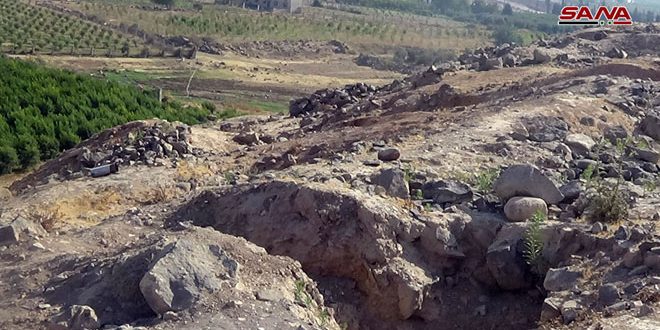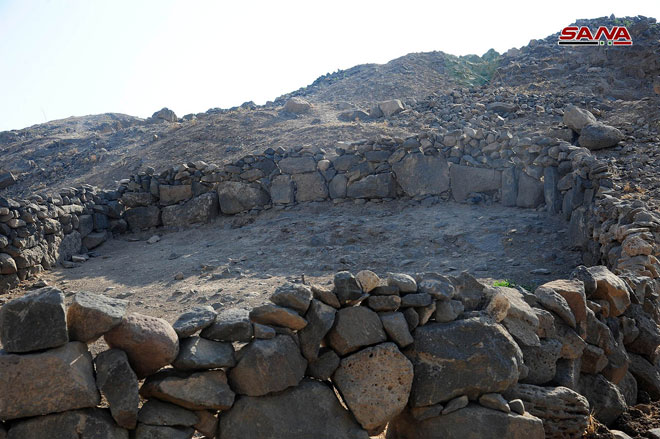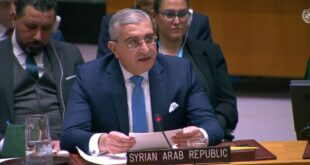Daraa, SANA- Tal al-Ashari in Houran area is another historical icon that was looted and vandalized by terrorist organizations which carried out systematic attacks, orchestrated by their operators, on the ancient treasures that reflect the history of the Syrian human civilization.
SANA’s camera toured Tal al-Ashari, which is located 16 km to the west of Daraa city and overlooks al-Yarmouk basin, and documented the damage caused by illegal excavation and sabotage done to its archaeological sites by terrorist organizations for over seven years before the province was liberated from terrorism, thanks to the sacrifices and heroism of the Syrian Arab Army.
Head of Antiquities Directorate in Daraa Mohamed al-Nasrallah told SANA’s reporter that Tal al-Ashari was subjected to attacks with explosives, drilling and excavation  using heavy machinery and multiple tools by groups specialized in sabotage, adding that the archeological area was largely damaged.
using heavy machinery and multiple tools by groups specialized in sabotage, adding that the archeological area was largely damaged.
He added that the most prominent targets of terrorist groups over the past seven years were the search for antiquities, selling them as well as smuggling them to neighboring countries.
He pointed out that Tal al-Ashari dates back to the third millennium BC, and is no less important than the cities of Mary and Ebla as it is one of the cities of Decapolis, established by the Roman Emperor Pompey in 64 BC, which included ten important cities. Moreover, Tal al-Ashari has an archaeological theater on the western edge with a diameter of 50 meters and a capacity to accommodate 7,000 spectators. It is originally an open-air museum, but terrorist attacks on it and the theft of its historical items resulted in altering the features that have been preserved for thousands of years.
Al-Nasrallah pointed out  that the last archeological excavation in Tal al-Ashari was in 2010, where 3,000 artifacts were discovered, among them earthen pieces, saddles and bronze tools, in addition to 21 cemeteries, 16 of which date back to the Bronze Age and the others to the Roman period.
that the last archeological excavation in Tal al-Ashari was in 2010, where 3,000 artifacts were discovered, among them earthen pieces, saddles and bronze tools, in addition to 21 cemeteries, 16 of which date back to the Bronze Age and the others to the Roman period.
The archaeological sites and cities in Syria were exposed to two types of terrorist acts: the trade and smuggling of historical artifacts by terrorists in order to secure additional sources of funding, and the destruction of monuments that terrorists could not sell or smuggle out of Syria, such as the destruction facade of the Roman amphitheater and the Tetrapylon in Palmyra city.
Manar al-Frieh/Manal
 Syrian Arab News Agency S A N A
Syrian Arab News Agency S A N A




